These Are The 10 Largest Non-Planets In Our Solar System

Only 8 worlds make the astronomical cut as planets. Here are the 10 fascinating bodies that didn’t make it.
Astronomically, bodies within the Solar System must achieve three criteria in order to gain the much-vaunted status of planet:
- Gravitationally pull themselves into a spheroidal shape, where they obtain hydrostatic equilibrium,
- Orbit the Sun in an ellipse and no other smaller, parent body,
- and clear their orbit of any substantially-massed objects.
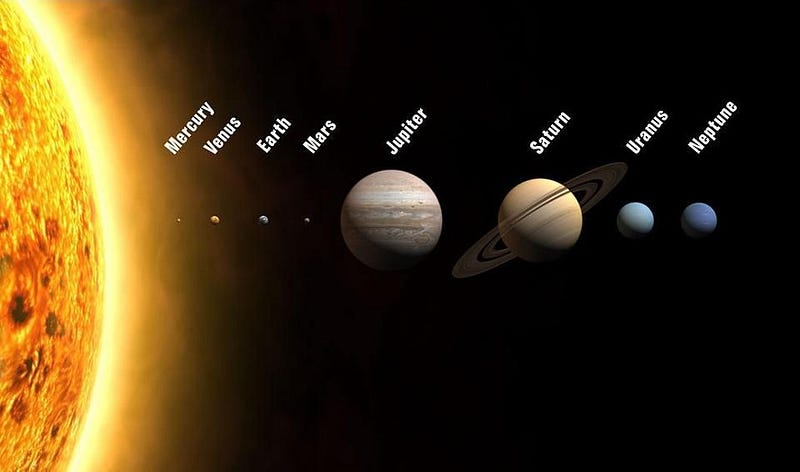
In our Solar System, only eight worlds make the cut given those criteria. The four rocky planets (Mercury, Venus, Earth, Mars) and the four gas giant worlds (Jupiter, Saturn, Uranus, Neptune) are the only ones that can be called planets under these definitions. Everything else, no matter how large or massive, fails on one of the latter two criteria.
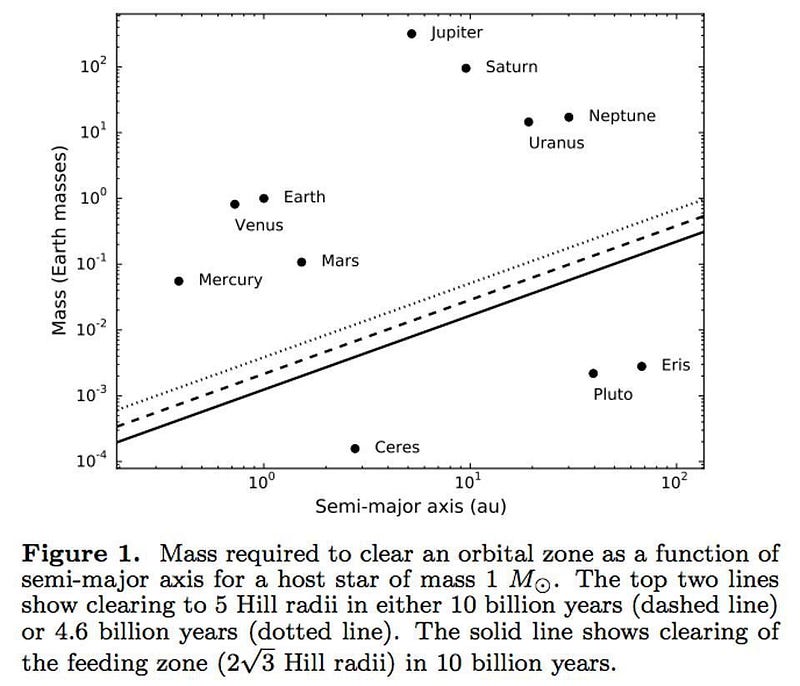
A simple mass-distance relationship could extend this definition to other Solar Systems as well, transforming the IAU’s current definition into a universal one that defines “planets” for exoplanetary systems as well.
Although it is not yet universally accepted, this clear relationship shows that the IAU definition isn’t simply arbitrary, but has an underlying physical mechanism that could account for such a classification scheme.
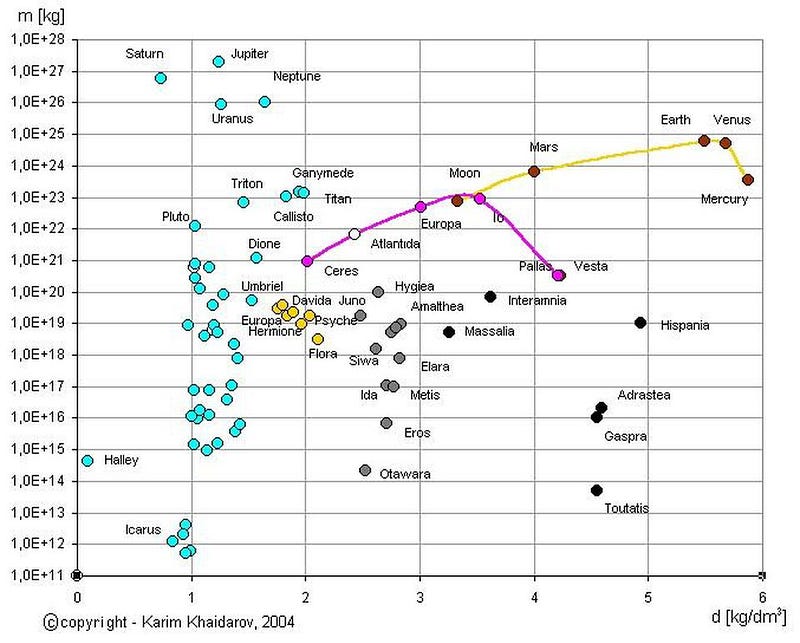
Yet being a planet, by definition, isn’t everything. Many of the non-planets, even in our own Solar System, are fascinating in their own right. Here are the 10 largest ones we have, along with what makes them so interesting.
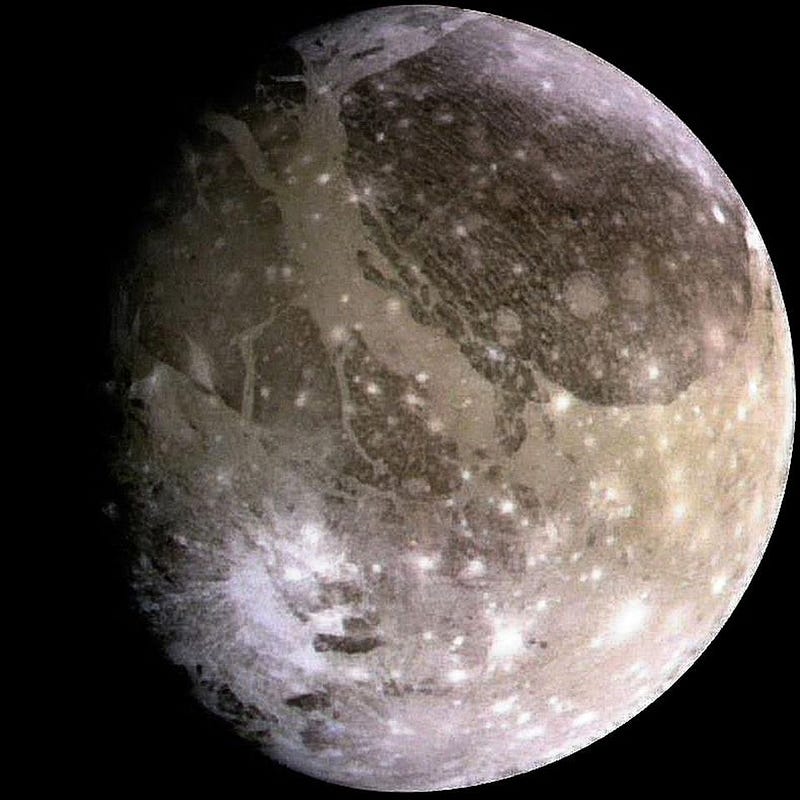
1.) Ganymede: Jupiter’s largest moon is the largest non-planet in the Solar System. With a diameter of 5,268 km (3,271 miles), it’s 8% bigger than the planet Mercury, although it has less than half the mass of our Solar System’s innermost planet, being made of mostly ices and silicate minerals. At just 45% the mass of Mercury, it has an asteroid-like density rather than a density comparable to the terrestrial planets.
Still, it has an iron core that generates its own magnetic field, which dominates very close to the surface even over the enormous magnetic field of nearby parent planet Jupiter. Observations suggest it has an underground ocean beneath the surface, possibly containing even more water than planet Earth possesses. Its atmosphere is almost non-existent: 100 billion times thinner than Earth’s, made almost exclusively of oxygen and hydrogen compounds arising from vaporized ices.
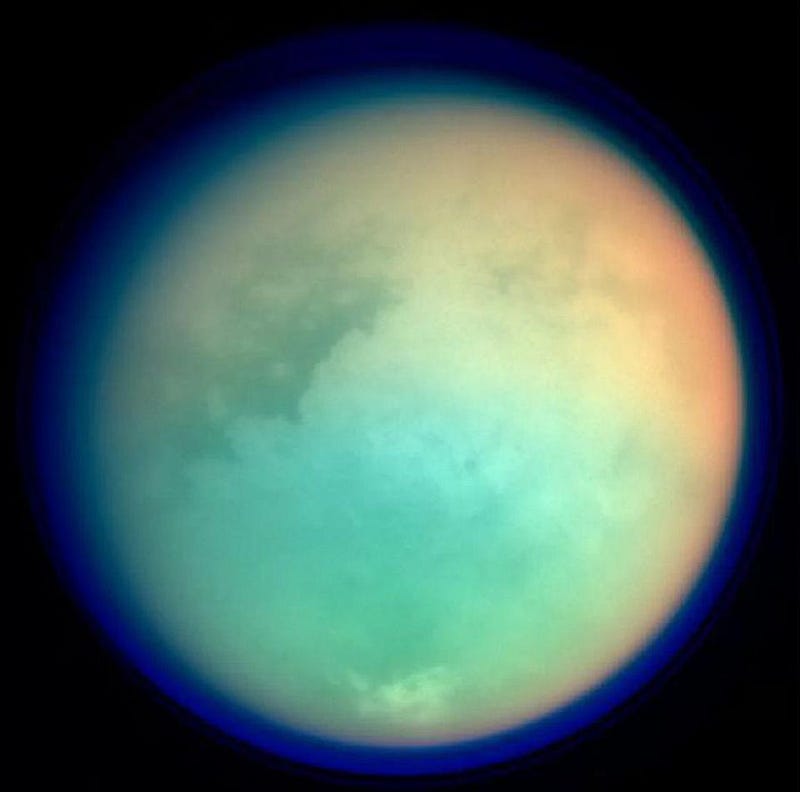
2.) Titan: Saturn’s enormous satellite, Titan, also surpasses Mercury in size, but has little else in common with virtually airless Ganymede. Titan’s atmosphere is the richest of any moon in the Solar System, with an atmospheric pressure at its surface greater than that even of Earth. It forms seasonal clouds and weather patterns at its poles, above the methane hazes that dominate its atmosphere.
The surface pressure allows for the presence of liquids there, most prominently methane. The Huygens lander discovered methane lakes and even waterfalls on Titan’s surface, while Cassini’s infrared imager was able to map Titan’s surface through the clouds. In many ways, of all the moons we know of, it’s the one most like the other rocky planets of the Solar System.
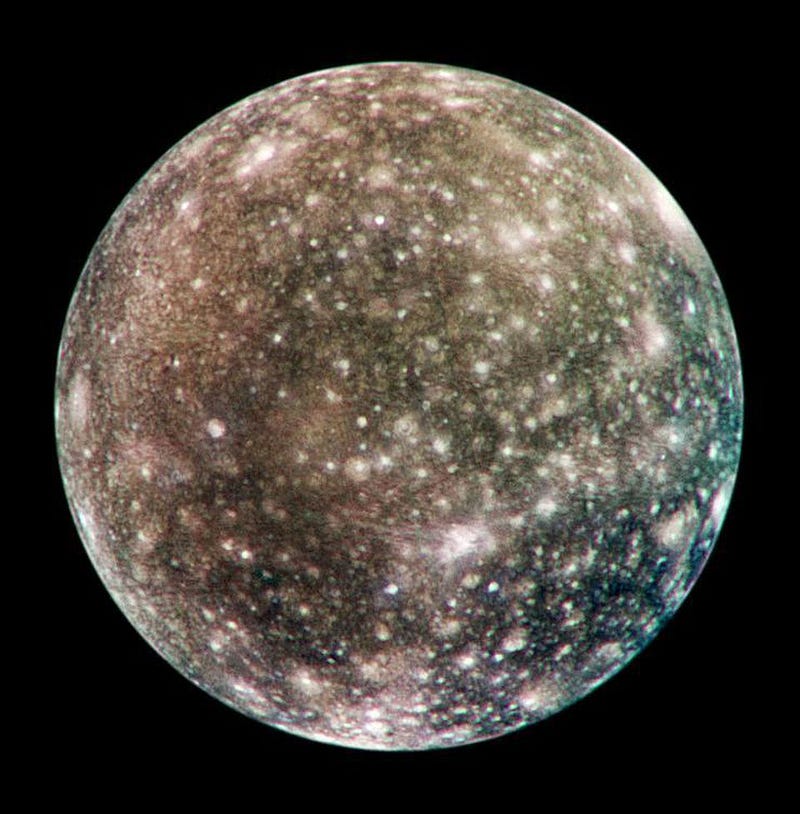
3.) Callisto: The oldest and most heavily-cratered moon in the Solar System, Mercury-sized Callisto is the largest moon to show very few properties of what we’d call “differentiation” between its layers. The most distant of the four Galilean moons around Jupiter, Callisto receives very little tidal heating at this great distance, and isn’t locked into the same resonant orbits as Io, Europa, and Ganymede. It has the lowest density and surface gravity of any of the Galilean satellites.
Although it’s tidally locked to Jupiter, with the same face always facing its jovian parent, its surface appears to be extremely old. It is the most heavily cratered world known in the Solar System, thought to have the oldest surface of all. Of all the large moons we know of, Callisto shows the smallest differences in composition between core, mantle, and crust, likely due to its formation by slow accretion at such a great distance (and with so little tidal heating) from Jupiter.
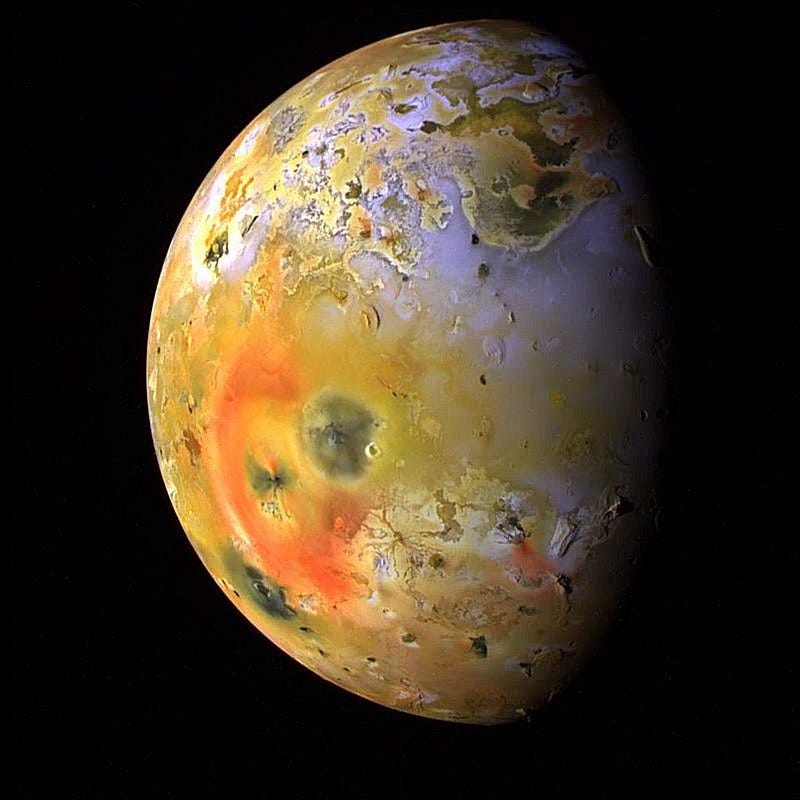
4.) Io: Jupiter’s volcanic world is constantly torn apart by tides, resurfacing itself via its molten lava interior. In many ways, Io is the counterpoint of Callisto, showcasing what a large Moon can be like with an extraordinary amount of tidal heating from orbiting too close to a gas giant. Io displays:
- a total of more than 400 active volcanoes, making it the most geologically active object of all,
- plumes of sulfur and sulfur dioxide that rise as high as 500 km (300 miles) above its surface,
- and more than 100 mountains, many rising higher than Earth’s Mt. Everest, due to uplifting events inside Io.
Io has virtually no craters, as it is constantly resurfaced, and many regions with molten lava visible at any given time. Io is the most water/ice-poor world in the entire Solar System, primarily composed of silicate rock with a metal-rich core.
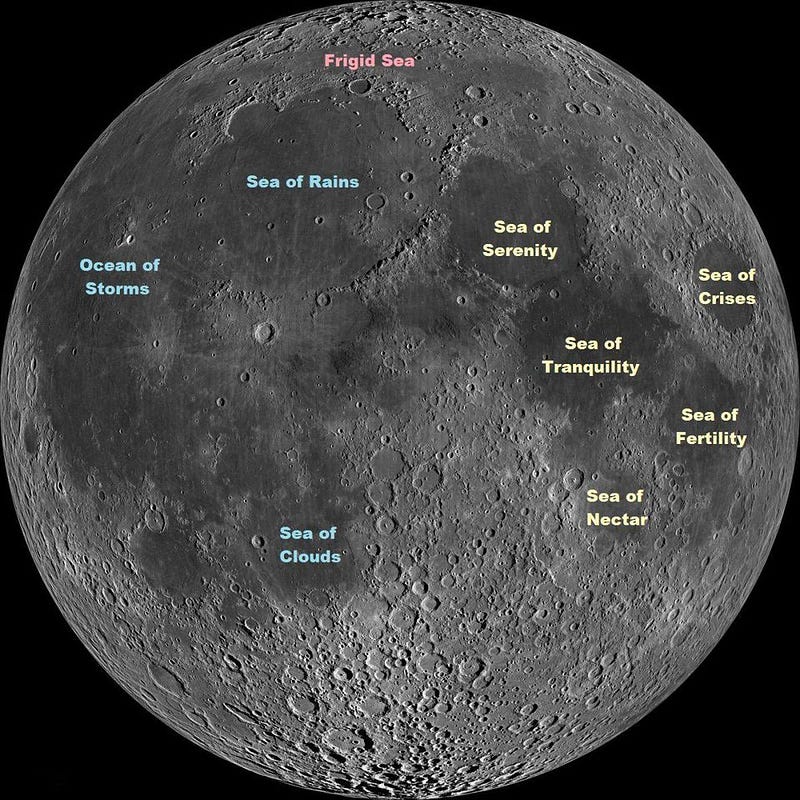
5.) Moon: The only satellite of a rocky world on this list, our Moon may well be the youngest large object in the Solar System. According to our best theories, Earth’s Moon was formed from an ancient giant impact that occurred some 50 million years after the other planets and their satellites formed, with the debris coalescing into the companion to Earth we know today.
Like all other moons on this list, our Moon is tidally locked to its parent planet, with the same side always facing our world. It does have its own internal heat source: primarily from the decay of radioactive elements. The Moon’s composition is very similar to the composition of Earth rocks, making it unique among all the large non-planetary objects in the Solar System.
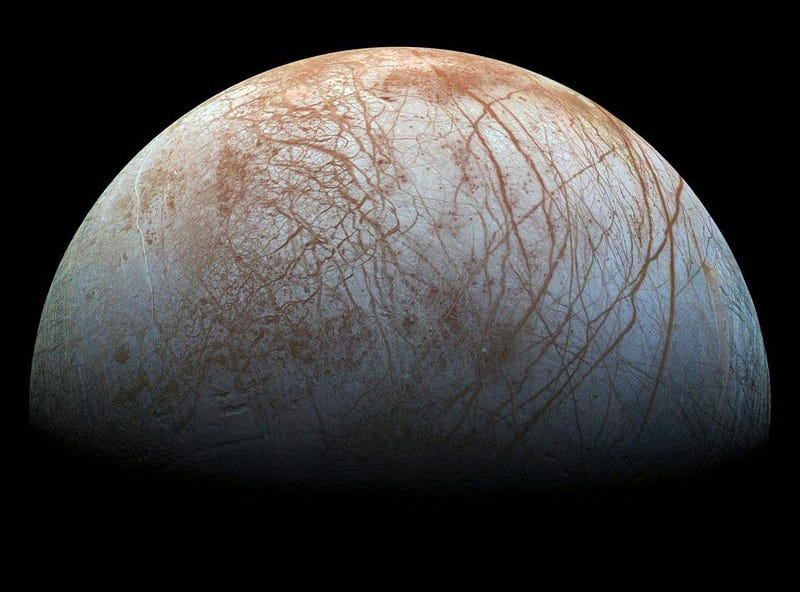
6.) Europa: The smallest and most hospitable of Jupiter’s four large moons, Europa is covered in water-ice with a subsurface, liquid ocean. Similar to Ganymede, Europa has a very thin atmosphere made mostly of oxygen, due to the sublimation of the volatile ices on its surface. Unlike the other moons on this list so far, however, Europa’s icy surface and large volume make it the smoothest object in the Solar System, despite its striated appearance.
The heat from tidal flexing, induced from Jupiter’s gravitational pull, is thought to cause the subsurface ocean to remain liquid, driving the ice to move in a fashion similar to plate tectonics. With surface chemicals being actively transported to the subsurface ocean below, plus the hydrothermal heating from beneath, Europa’s oceans may potentially harbor extraterrestrial life. Cryovolcanic plumes, similar to Saturn’s Enceladus, were first detected in 2013.
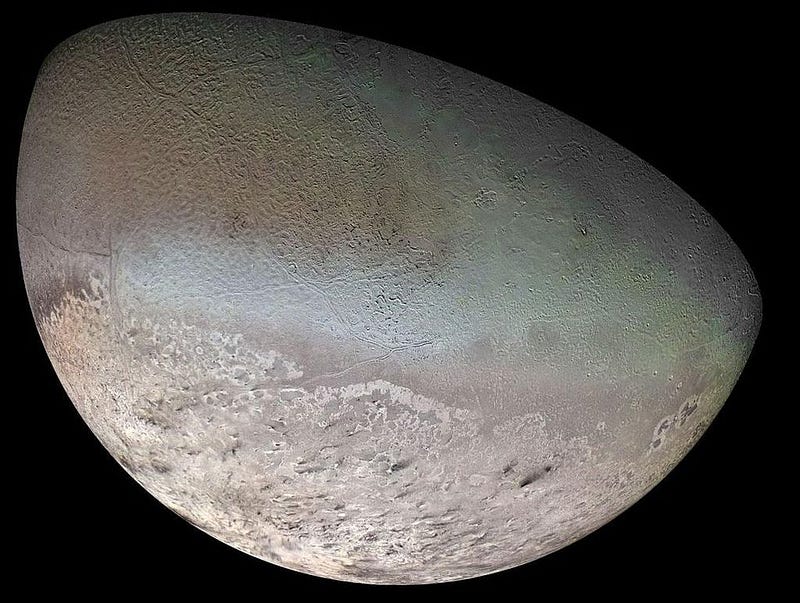
7.) Triton: Neptune’s largest moon was once the Solar System’s largest Kuiper belt object, but was gravitationally captured a long time ago. Orbiting close in at a mean distance of only 355,000 km, both rings and moons are nowhere to be found around Neptune until you reach a distance more than 15 times as great. Triton, during its capture, must have cleared out a huge fraction of the Neptunian system!
Orbiting in a retrograde fashion (counterclockwise, as opposed to clockwise), Triton is the only large moon to exhibit this characteristic, further evidence of its captured nature. It’s an active world that resurfaces itself over time, with erupting geysers, a thin, Pluto-like atmosphere, and covered in a mix of nitrogen, water, and carbon dioxide ices. Its smoke-emitting cryovolcanoes point to a subsurface ocean and ongoing activity.
Triton makes up 99.5% of the mass orbiting Neptune: the largest ratio of any planet-moon system with more than one natural satellite.
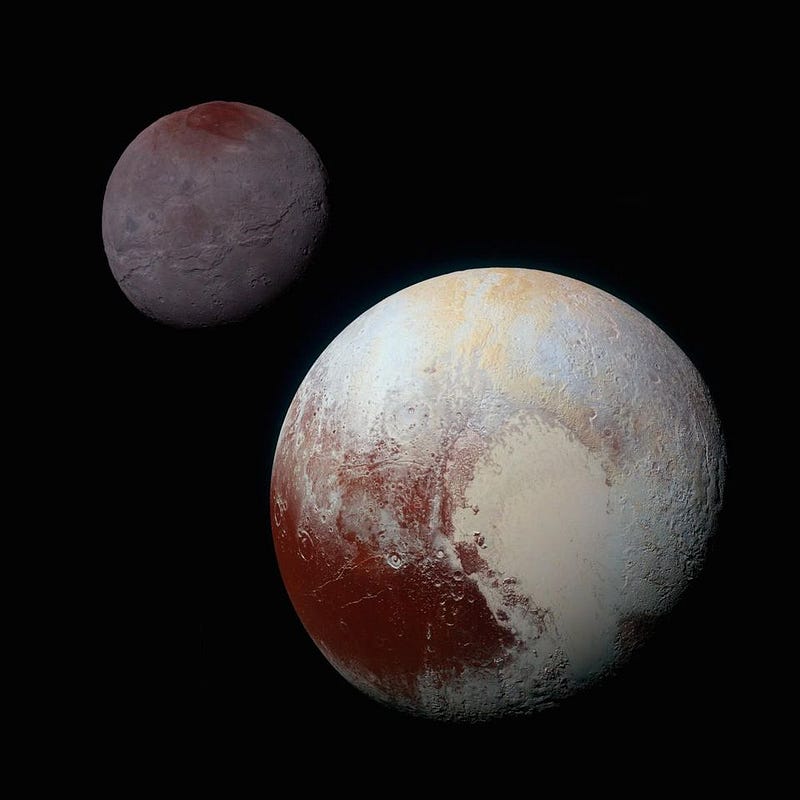
8.) Pluto: Finally, we get to everyone’s favorite former planet, and the first non-moon on our list. Smaller and less massive by far than Triton, and less than half the diameter of Mercury, the Plutonian system is the first one in the Kuiper belt to be imaged from up close. Its large natural satellite, Charon, was likely formed from a giant impact, along with its four other moons: Styx, Nix, Kerberos and Hydra.
Charon, in particular, is so large that it makes the Plutonian system a binary one, where the center-of-mass of the system lies outside of Pluto itself. Its geological history also points to an active world, as giant ice mountains, snows, valleys, and sublimating plains show a frozen world in motion. Along with many worlds on this list, Pluto likely has a liquid ocean beneath the surface, raising more questions about biochemistry and organics than it answers.
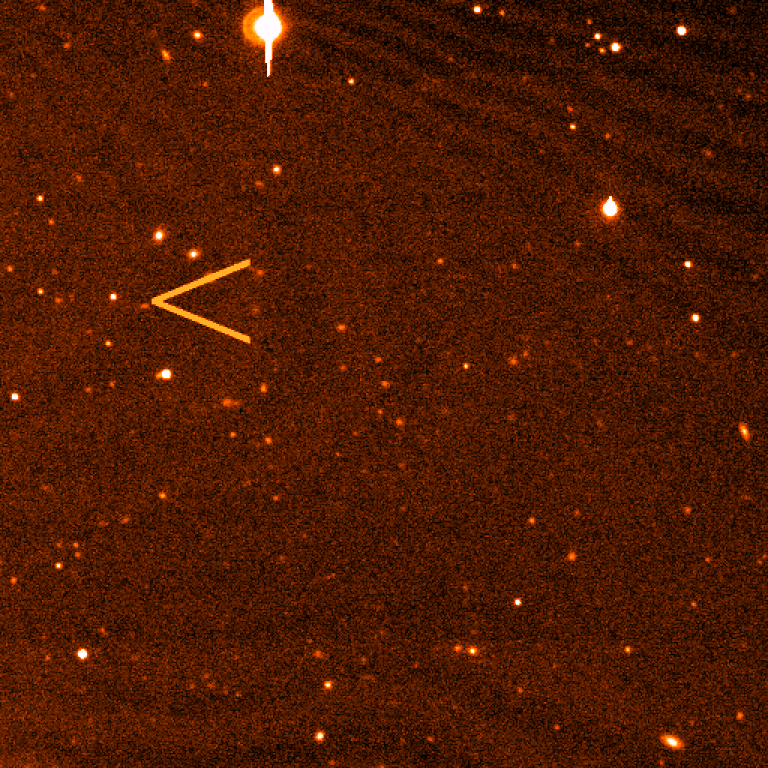
9.) Eris: Nearly as large as Pluto but more massive, Eris’ current location, near the aphelion of its orbit, places it at approximately three times the Sun-Pluto distance. Until last month, Eris was, with the exception of some long-period comets, the most distant object known in the Solar System. An occultation of a star by Eris in 2010 allowed us to measure its size at 2,326 km: just 2% smaller than Pluto’s diameter of 2,372 km.
Other than its mass, size, and orbital period, there is very little known about Eris due to its tremendous distance. It has at least one natural satellite: Dysnomia, is whiter in color than either Triton or Pluto, contains surface ices and a thin atmosphere similar to both of those worlds, and takes 558 years to complete an orbit around the Sun. If we launched a fly-by mission to Eris in 2032, a gravity assist from Jupiter could get a spacecraft there in merely 24.7 years.
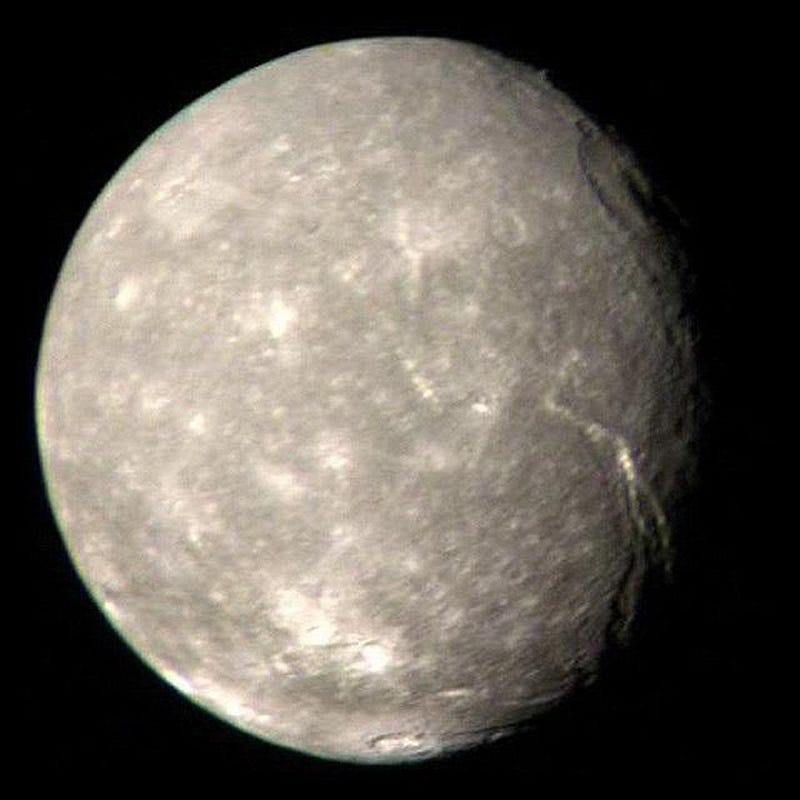
10.) Titania: Only by going all the way down to the tenth largest non-planet in the Solar System can we finally arrive at one of Uranus’ moons, of which Titania is the largest. Significantly smaller than Eris, Titania is under 1,600 km (1,000 miles) in diameter, and consists of approximately equal amounts of ice and rock. There may be a thin layer of liquid water at the core-mantle boundary of this world, and displays moderate cratering that points towards a resurfacing event relatively early in its history, after most of the impacts affecting the other nearby moons had already occurred.
There is both water ice and carbon dioxide ice on the surface of Titania, which may indicate a very thin, tenuous carbon dioxide atmosphere. Occultations of a star failed to reveal any atmosphere at all, however; if one exists, it would likely take approximately ten trillion of them to equal the pressure at the surface of Earth. It was only ever studied up close once: by Voyager 2 in 1986.
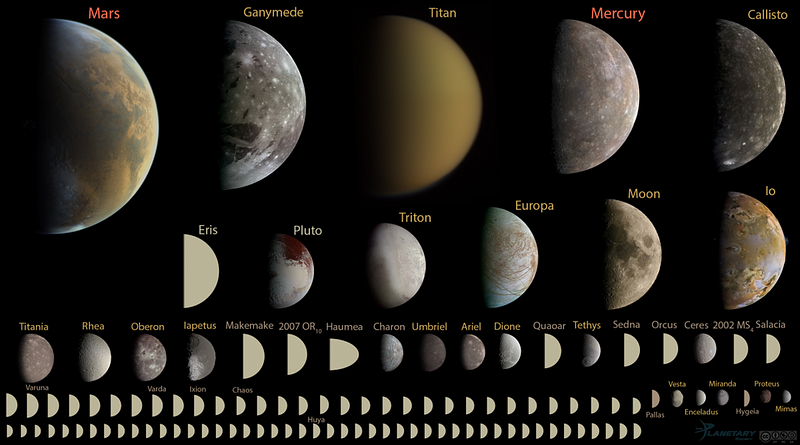
The next-largest objects on the list include other moons of Saturn (like Rhea and Iapetus) and Uranus (e.g., Oberon), followed by the other dwarf planets of the Kuiper belt and Pluto’s giant moon, Charon. If the idea that there is a large object some ~200 AU away, provisionally called either “Planet Nine” or “Planet X” turns out to be correct, it may knock everything on this list down a peg, or may even be classified as a planet itself.
Many of the objects we currently think of as having some importance in the Solar System, such as Ceres, the largest asteroid (at #25), or Sedna, a possible Oort cloud object (at #23), don’t come close to cracking the top 10. There is so much to learn from looking at what’s around us and where it is. Rather than argue about classification, we should appreciate our cosmic backyard for exactly what it is, and all the riches contained therein.
Ethan Siegel is the author of Beyond the Galaxy and Treknology. You can pre-order his third book, currently in development: the Encyclopaedia Cosmologica.





